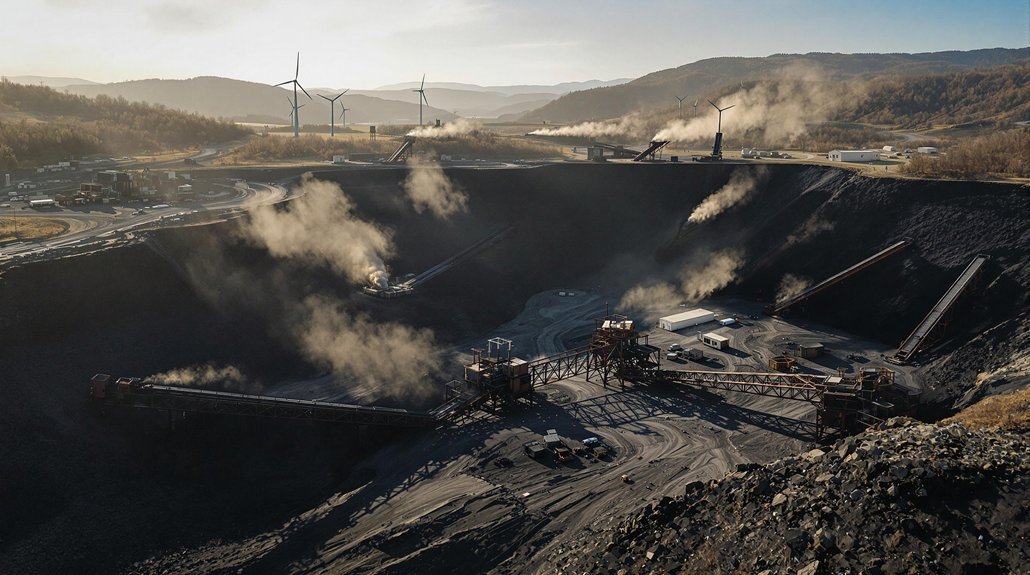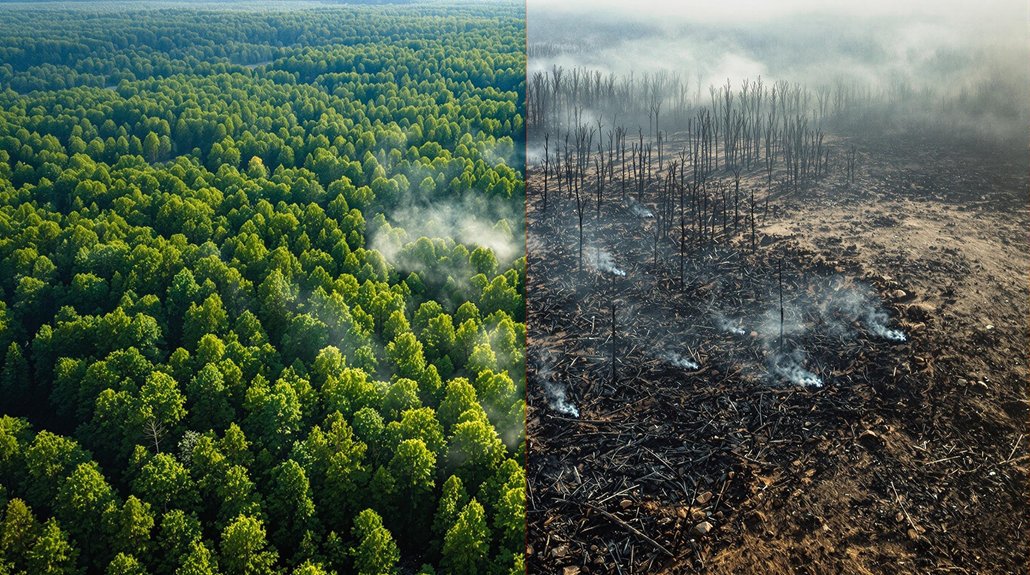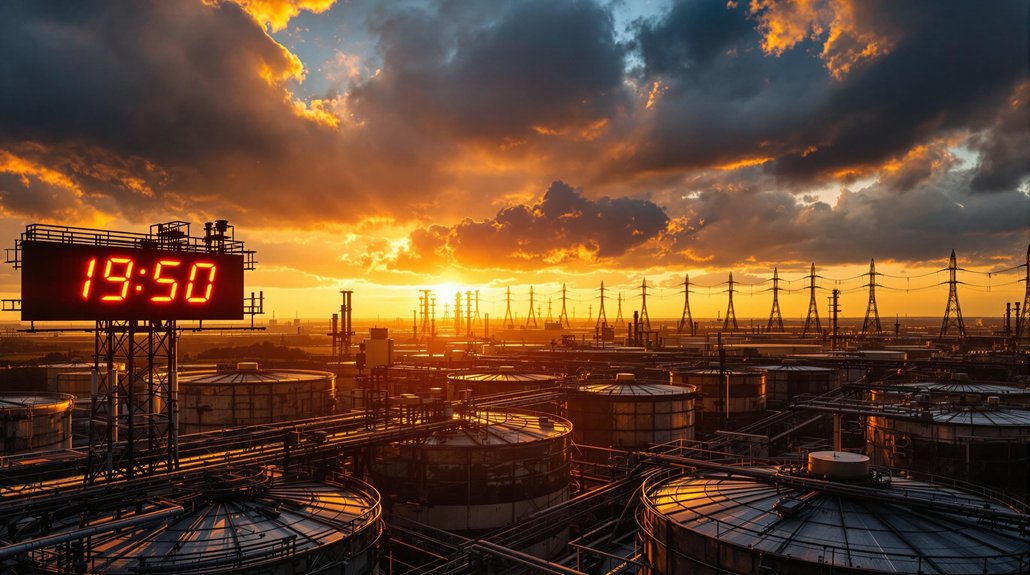Despite Trump’s promises to revive coal, market forces continued driving the industry’s decline. Coal production dropped by 40% in West Virginia, while mining jobs fell from 250,000 in 1979 to just 53,000 in 2016. Natural gas and renewable energy have become more competitive, making coal increasingly obsolete. Government efforts couldn’t overcome fracking’s impact, depleted reserves, and aging infrastructure. The future for America’s coal communities remains challenging as the transformation unfolds.
While President Trump promised to revive America’s struggling coal industry, the facts paint a grim picture of a sector in steep decline. Coal production in West Virginia alone dropped from 150 million tons to less than 90 million tons, mirroring a nationwide trend. Coal’s share of electricity generation fell from 49% in 2006 to just 30% in 2016, the same year natural gas became America’s top electricity source.
The human toll has been severe. Coal mining jobs plummeted from 250,000 in 1979 to just 53,000 in 2016. In West Virginia, once a coal powerhouse, mining jobs fell from 64,000 in the 1970s to 12,000 in 2016. Many miners who once earned $100,000 with benefits now face unemployment or lower-paying alternatives.
The collapse of coal mining jobs has devastated workers who once enjoyed middle-class wages but now face grim economic realities.
Communities built around coal face bleak prospects. West Virginia ranks 49th in per capita income, and the state expects coal tax revenue to drop from $420 million in 2012 to $151 million in 2018. This decline affects not just miners but entire towns and local economies.
Market forces, not politics, drive coal’s “death spiral.” Fracking cut natural gas prices by two-thirds since 2008. Wind and solar now compete on price. Appalachia’s easily accessible coal is largely gone, making extraction more expensive. Meanwhile, global demand for steam coal continues to fall. U.S. coal producers lost over 92% of their market value between 2011 and 2016. These market trends reflect the old and inefficient nature of America’s coal-fired generation fleet, which has contributed significantly to decreased coal consumption nationwide.
The Trump administration attempted to help by proposing to revoke the Clean Power Plan, supporting export terminals, and backing carbon capture technology. However, energy analysts remain skeptical about coal’s comeback.
Production is unlikely to return to former heights of 900 million tons per year. Even with Trump’s policies, projections show U.S. steam coal production could drop to 100 million tons by 2030 and below 50 million by 2050.
The reality is that America’s aging coal plants and depleting reserves, combined with cheaper alternatives, suggest the industry’s decline will continue regardless of political promises. For mining communities, the painful shift to new economic models remains inevitable.








